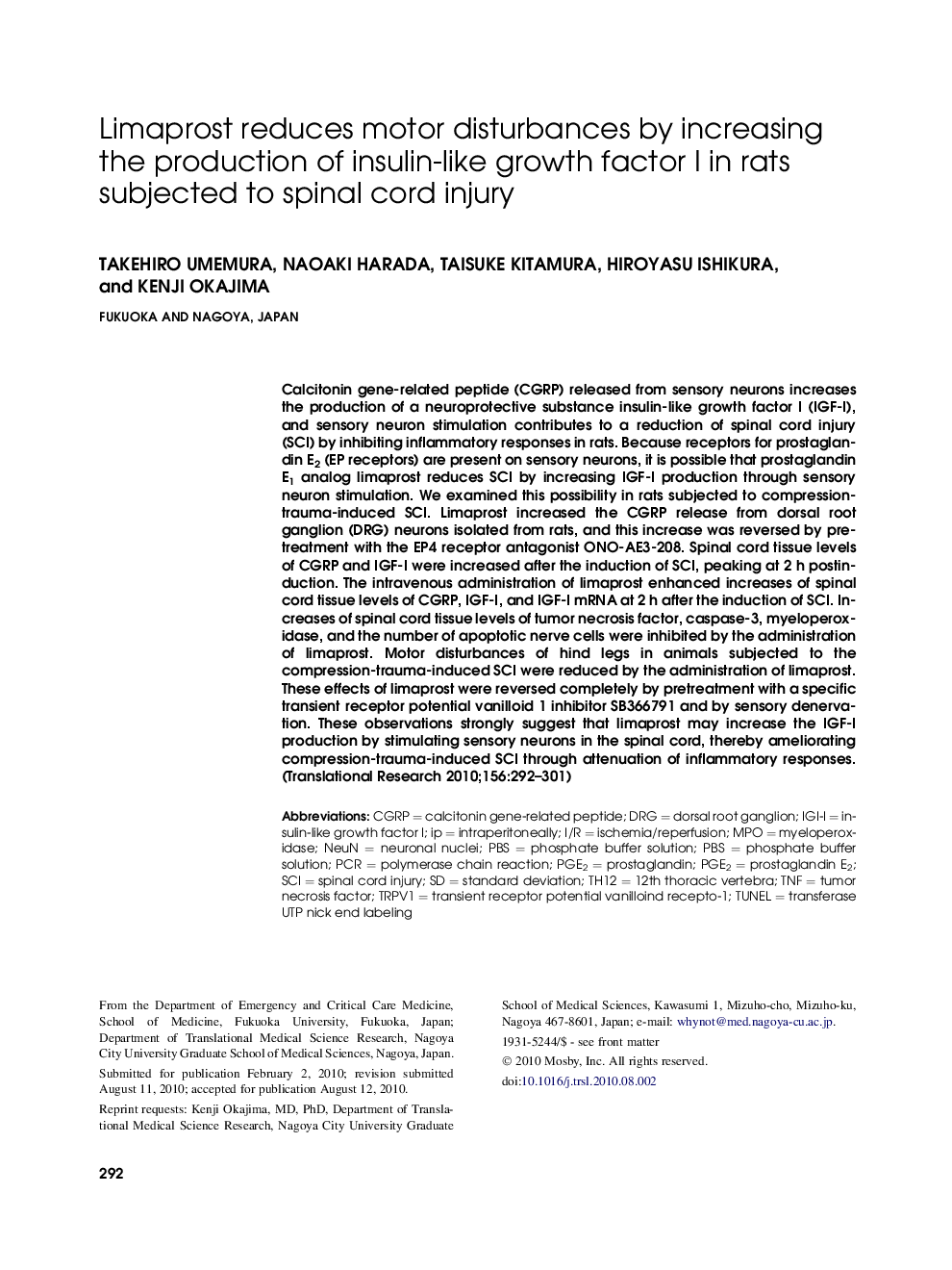| کد مقاله | کد نشریه | سال انتشار | مقاله انگلیسی | نسخه تمام متن |
|---|---|---|---|---|
| 3840851 | 1247942 | 2010 | 10 صفحه PDF | دانلود رایگان |

Calcitonin gene-related peptide (CGRP) released from sensory neurons increases the production of a neuroprotective substance insulin-like growth factor I (IGF-I), and sensory neuron stimulation contributes to a reduction of spinal cord injury (SCI) by inhibiting inflammatory responses in rats. Because receptors for prostaglandin E2 (EP receptors) are present on sensory neurons, it is possible that prostaglandin E1 analog limaprost reduces SCI by increasing IGF-I production through sensory neuron stimulation. We examined this possibility in rats subjected to compression-trauma-induced SCI. Limaprost increased the CGRP release from dorsal root ganglion (DRG) neurons isolated from rats, and this increase was reversed by pretreatment with the EP4 receptor antagonist ONO-AE3-208. Spinal cord tissue levels of CGRP and IGF-I were increased after the induction of SCI, peaking at 2 h postinduction. The intravenous administration of limaprost enhanced increases of spinal cord tissue levels of CGRP, IGF-I, and IGF-I mRNA at 2 h after the induction of SCI. Increases of spinal cord tissue levels of tumor necrosis factor, caspase-3, myeloperoxidase, and the number of apoptotic nerve cells were inhibited by the administration of limaprost. Motor disturbances of hind legs in animals subjected to the compression-trauma-induced SCI were reduced by the administration of limaprost. These effects of limaprost were reversed completely by pretreatment with a specific transient receptor potential vanilloid 1 inhibitor SB366791 and by sensory denervation. These observations strongly suggest that limaprost may increase the IGF-I production by stimulating sensory neurons in the spinal cord, thereby ameliorating compression-trauma-induced SCI through attenuation of inflammatory responses.
Journal: Translational Research - Volume 156, Issue 5, November 2010, Pages 292–301